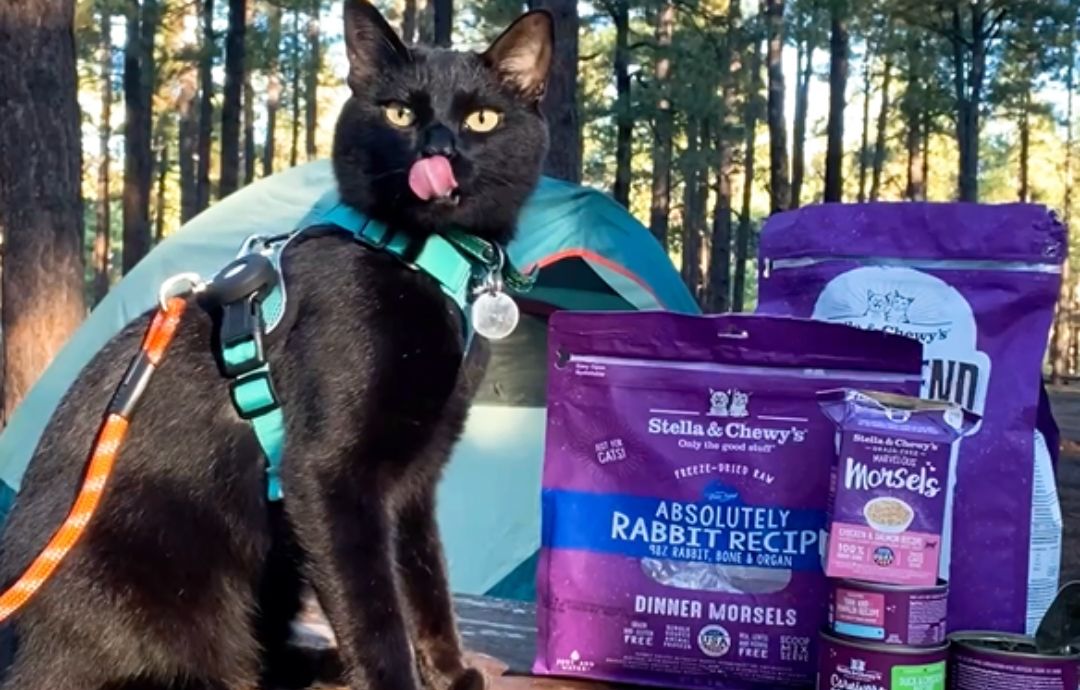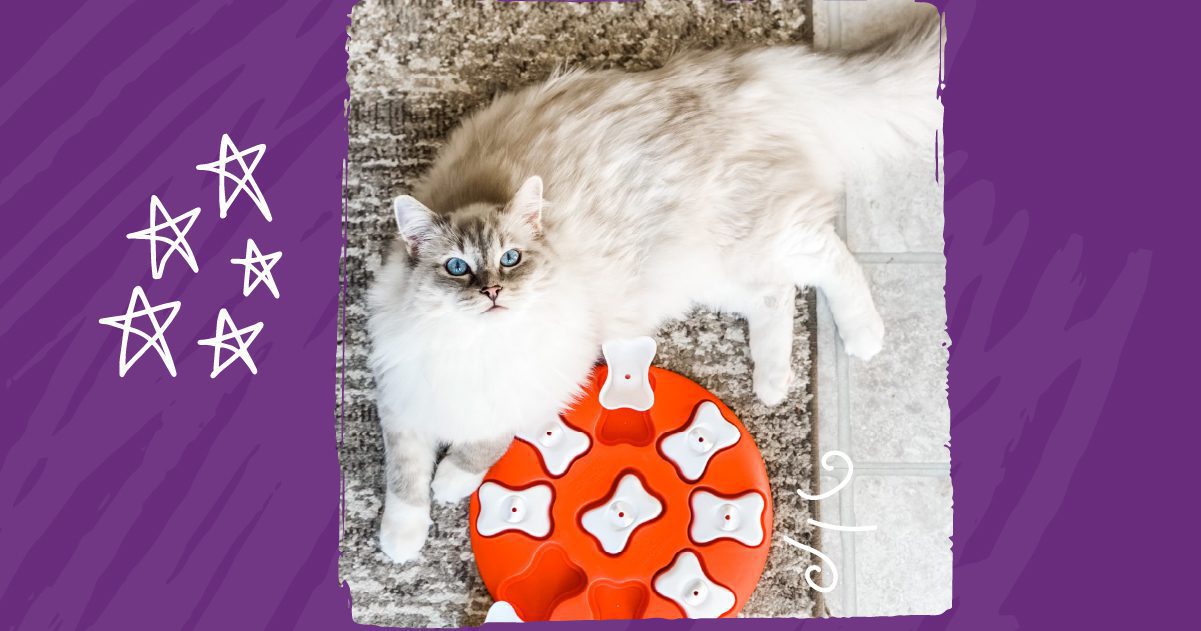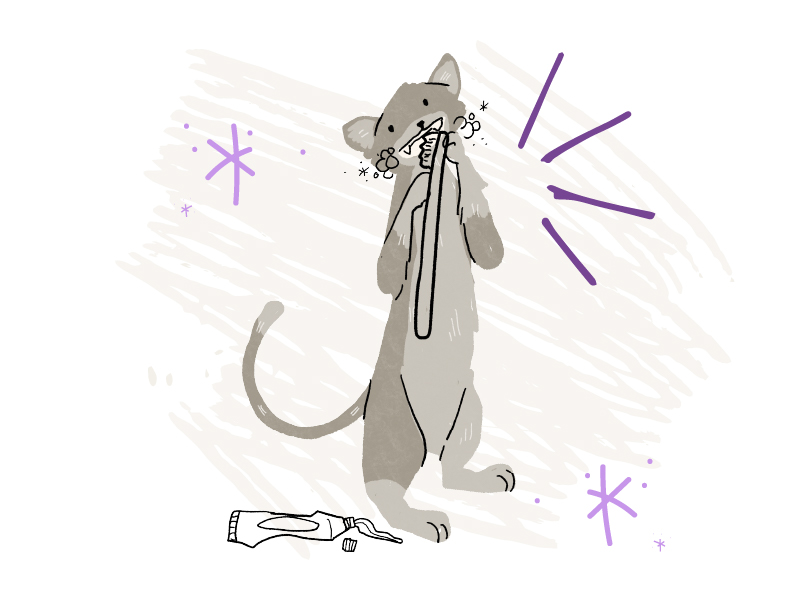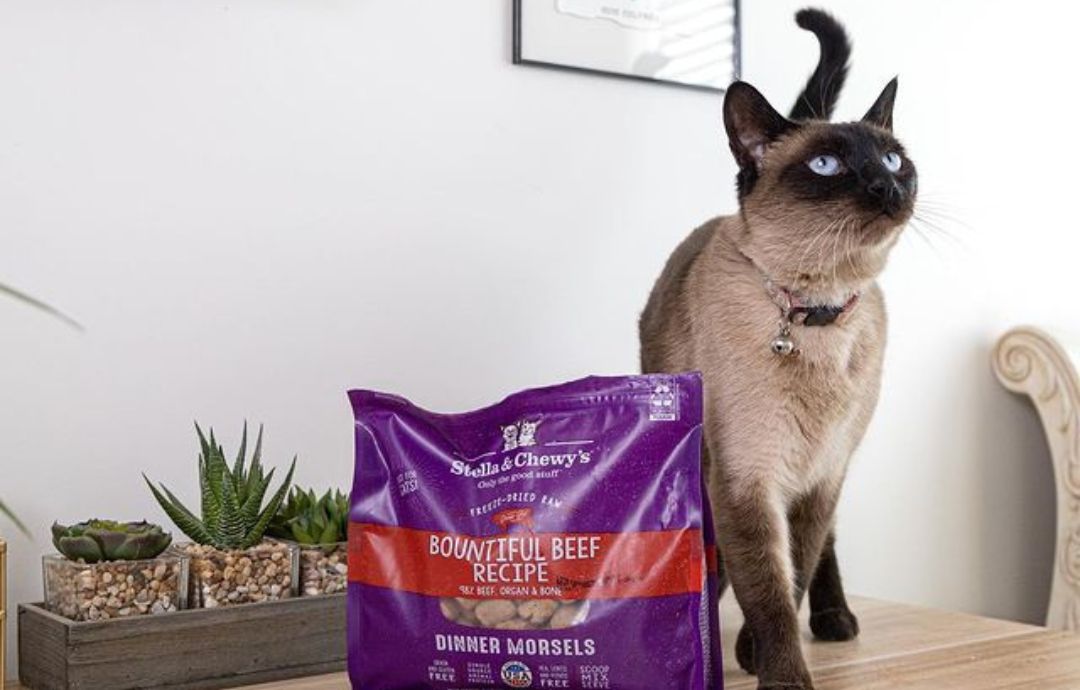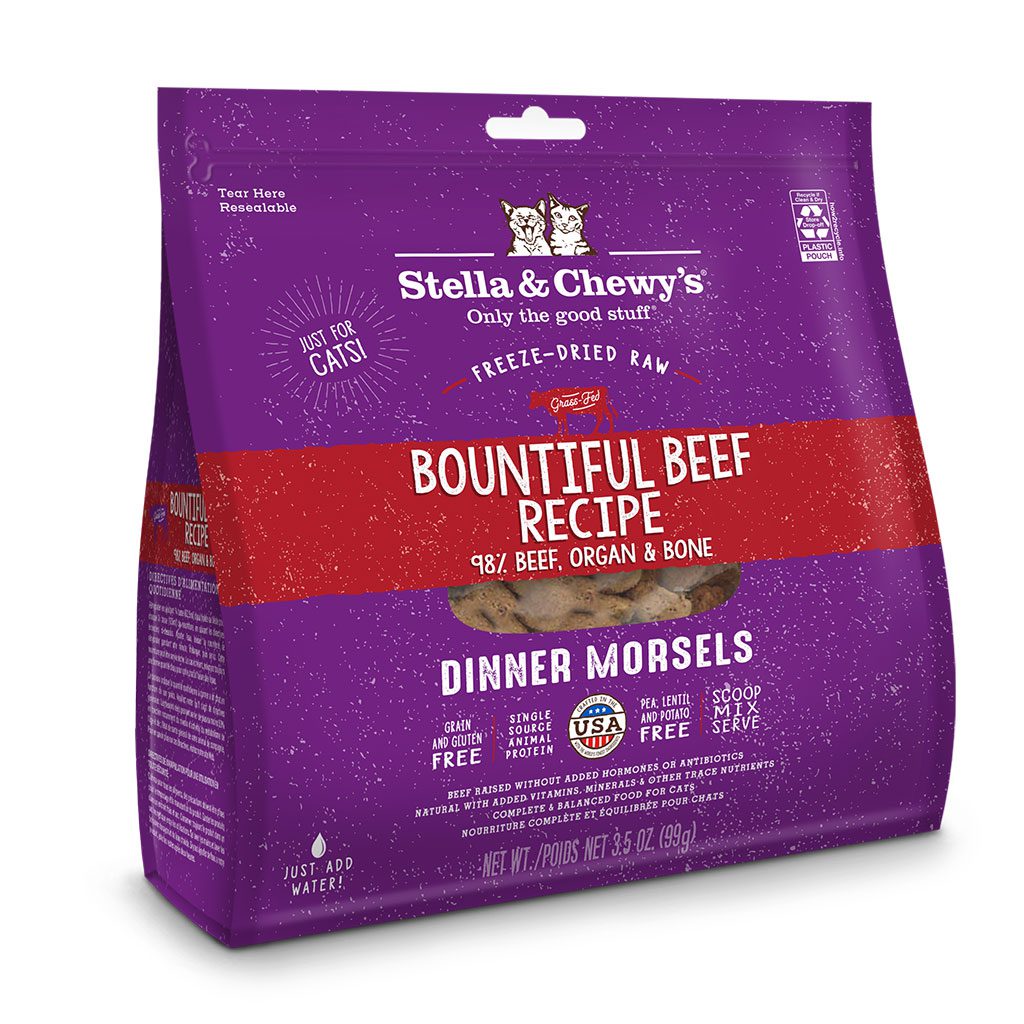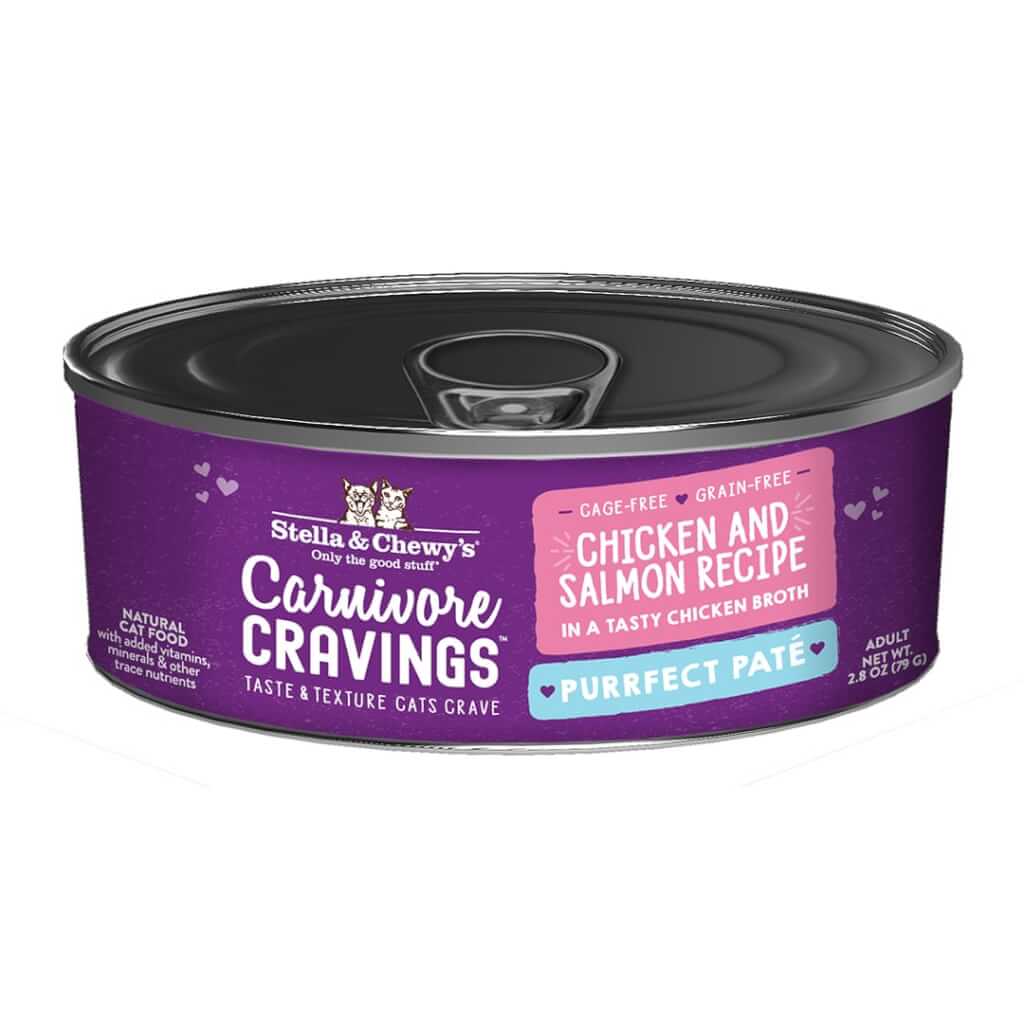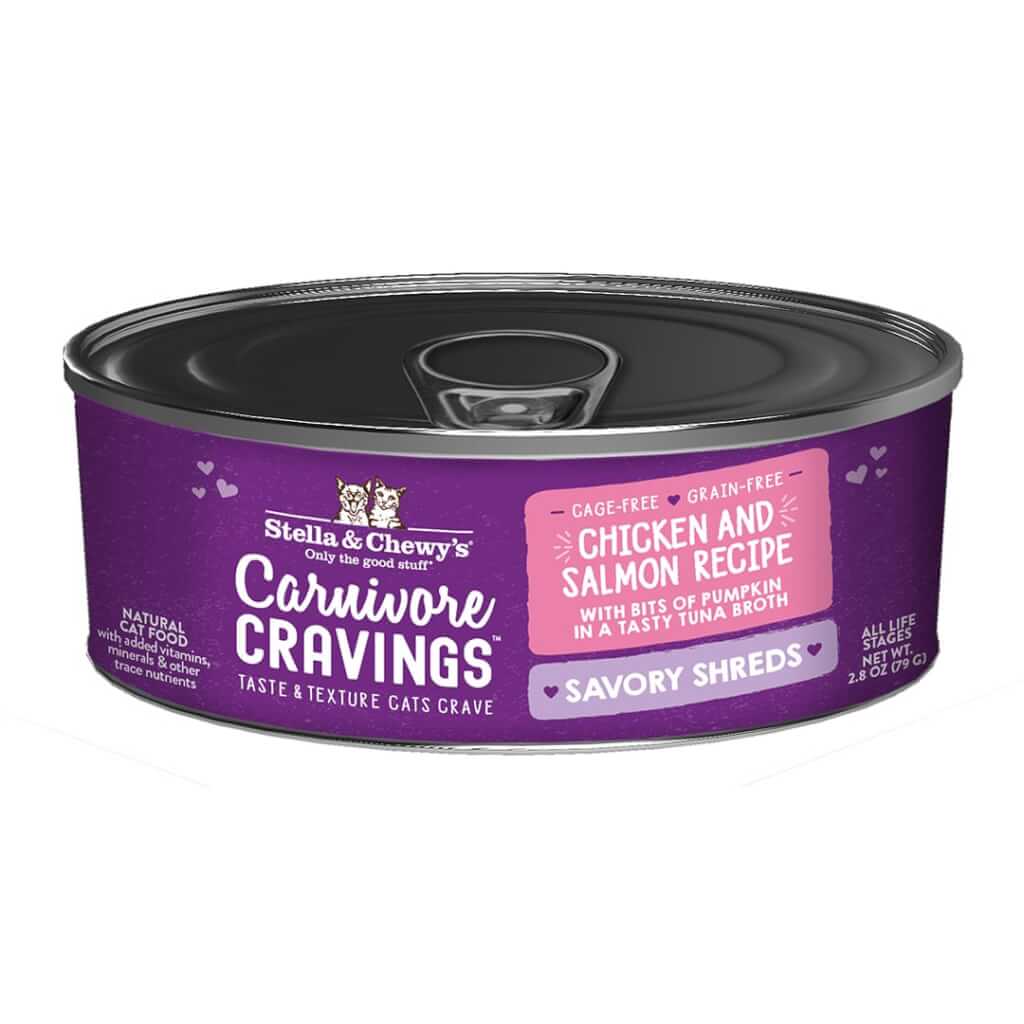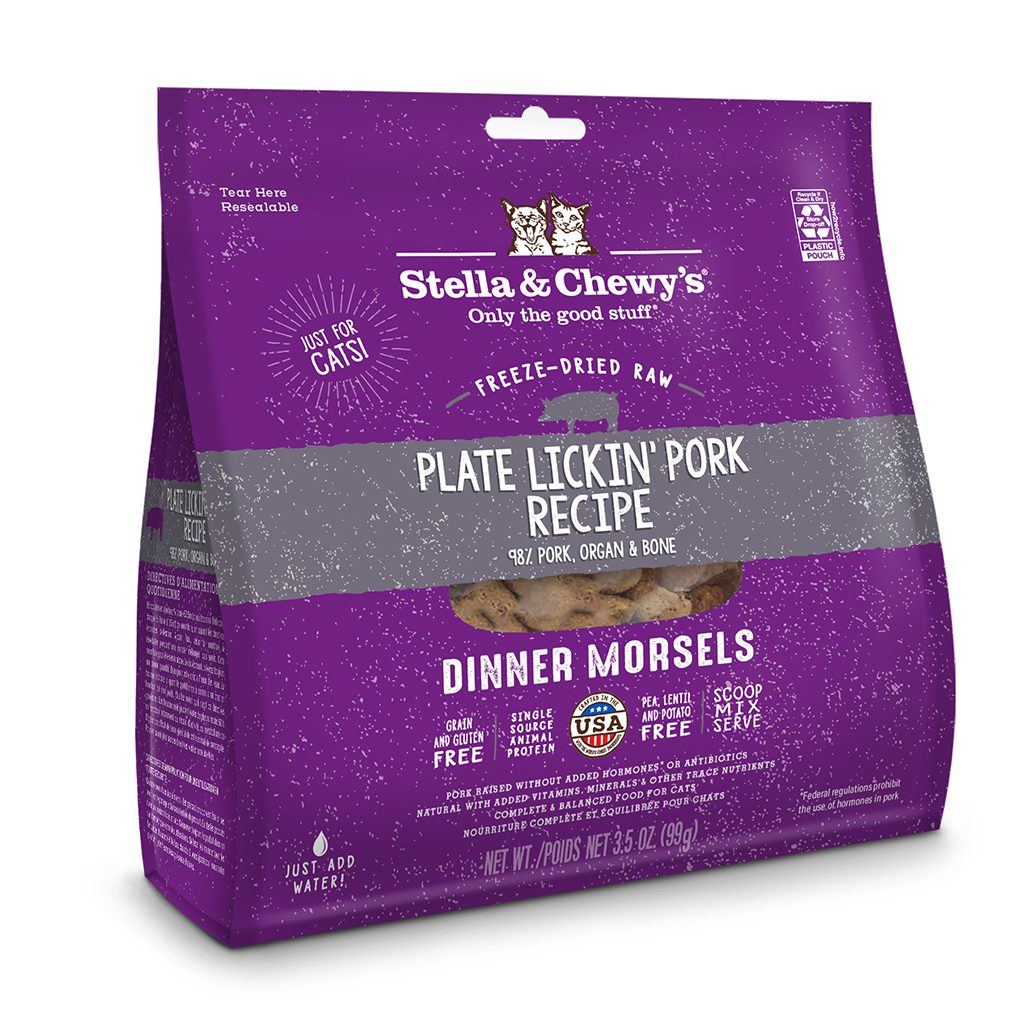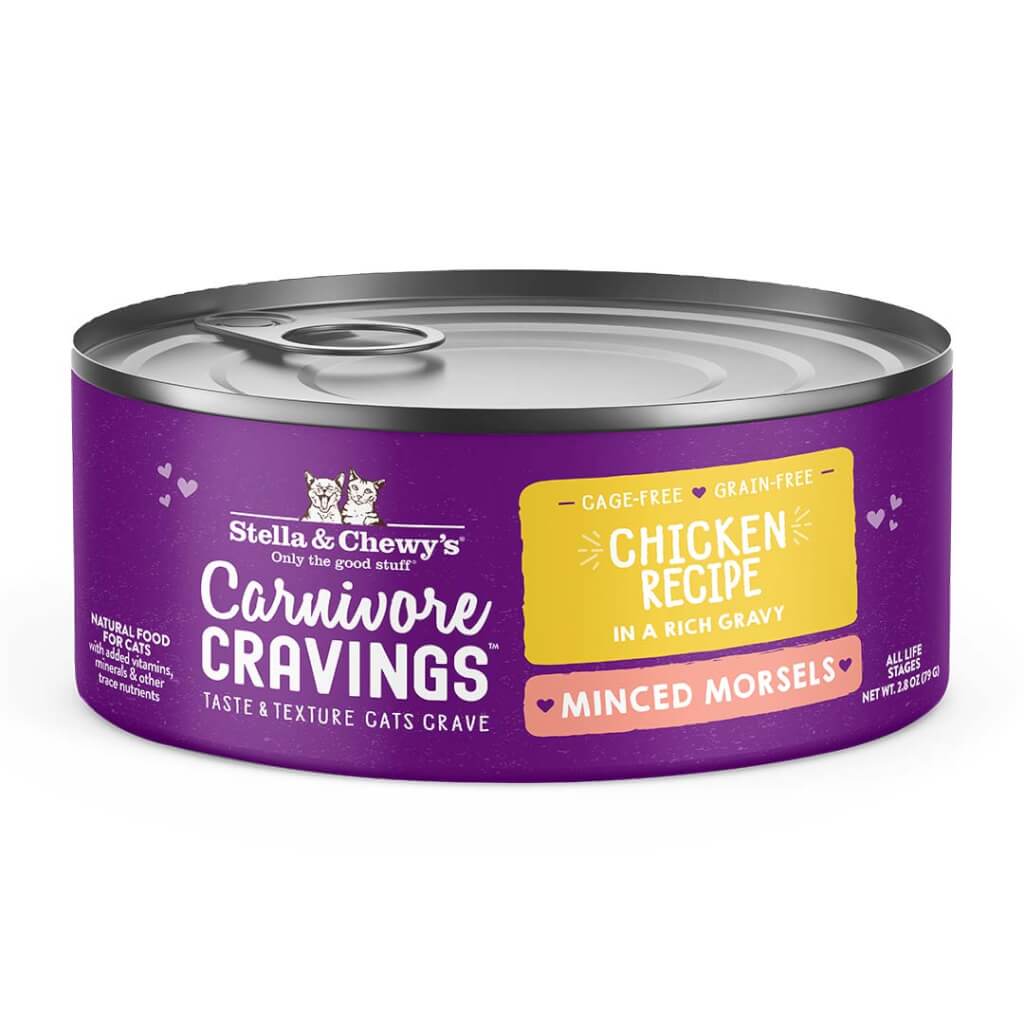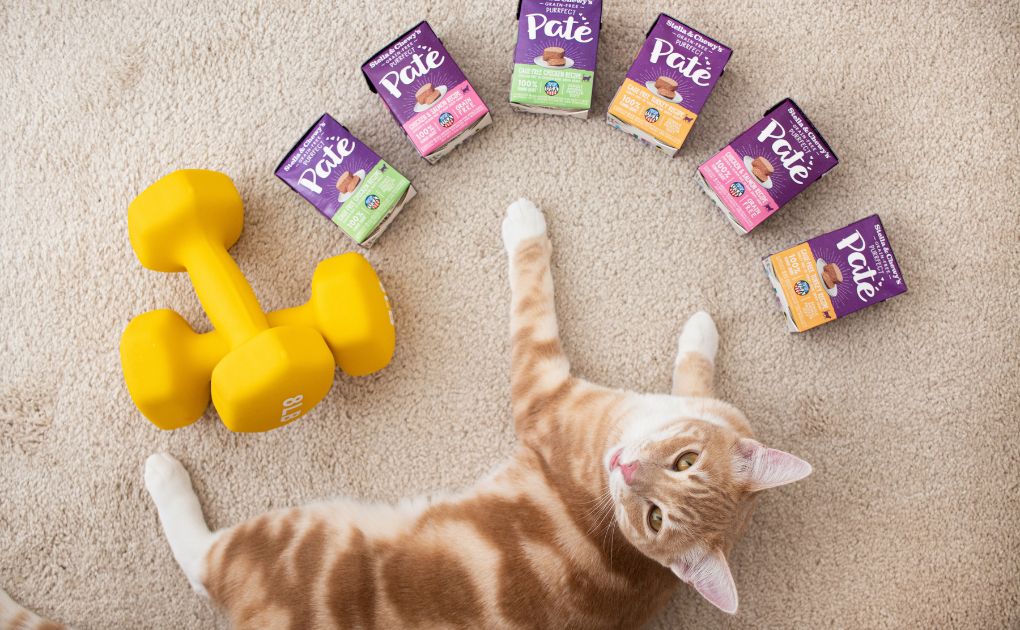
A healthy weight is crucial for a cat’s mobility and joints, heart and lung health, immune system and quality of life. Overweight cats have a higher risk of several serious health conditions including diabetes, fatty liver disease, and urinary tract infections. Underweight cats also face health risks including malnutrition, poor bone density, compromised immune health, and more. Before you try to help your cat lose or gain weight, speak with your cat’s veterinarian to make sure there are no underlying health concerns to be aware of.
What Is a Healthy Weight for a Cat?
A healthy weight varies depending on the cat because breed, age and sex affect overall body composition. As a very general guideline, most domestic cats should weigh around 8-10 pounds. But it’s important to have your cat assessed by a veterinarian to know what their individual ideal weight is. Vets commonly use a body condition scoring system to determine whether a cat is at a healthy weight, where 1 is extremely underweight, 9 is extremely overweight, and 4-5 is an ideal cat weight.
Signs your cat is at a healthy weight:
- You can easily feel your cat’s ribs beneath a slight fat layer
- When viewing your cat from above they have a noticeable waist (hourglass shape)
- Your cat does not have excessive abdominal fat when viewed from the side
Signs your cat is overweight:
- It’s hard to feel their ribs through the fat layer
- There is no discernable waist when viewed from above
- Viewed from the side, they have a sagging belly or fat pad
Signs your cat is underweight:
- Their ribs, spine and hip bones are prominent – they may be visible if your cat has short fur
- Viewed from above, their waist is sharply defined
- Viewed from the side, their abdomen is noticeably higher than their rib cage
Use this body condition score chart from the World Small Animal Veterinary Association for a visual guide.
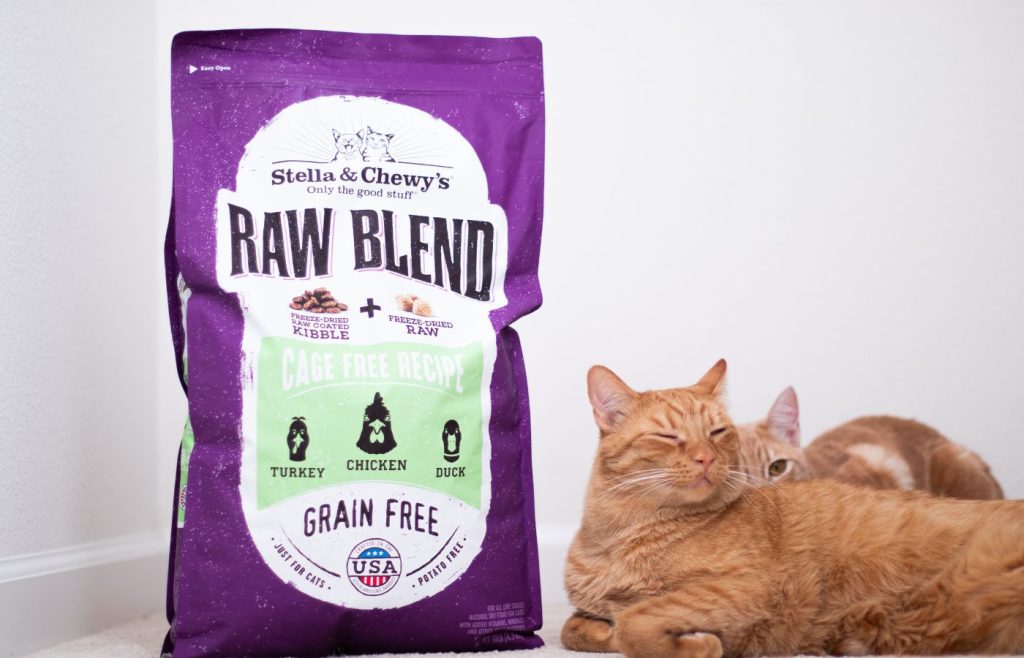
Feeding & Diet
First things first, you’ll want to replace your cat’s feeding system if it’s a self feeder or automatic cat feeder. Doing this will give you more control over their portion sizes and meal frequency. Most pet food companies, including Stella & Chewy’s, provide recommended feeding guidelines on their packaging. These feeding guidelines should be taken seriously because they’ve been crafted by trusted professionals and are based on each specific type of food.
Adjust feeding guidelines with expert help: Depending on your cat’s breed, gender, and size, feeding guidelines can differ drastically. Refer to the feeding guidelines on the package as an initial recommendation, and feed your feline the correct portion size as recommended by your vet.
Help your cat eat more slowly: If your cat wolfs their meals, you can try using a puzzle feeder to get them to slow down so they can properly digest all of their food.
Divide up the daily portion: You can also adjust how frequently you feed your cat. Some cats do better with multiple small meals each day rather than two larger meals.
Drown out the meows:Although it’s easy to give in, try to resist the temptation when your cat comes calling for extra food. As with any other species, cats will let you know if they’re still hungry or want a special treat. However, it’s essential to be strict with their feeding to ensure a healthy cat weight.
Limit treats: A tasty treat is great every now and again, but don’t allow your cat to run the show. As the cat parent, you need to know what’s best for your cat even if they don’t. As a rule of thumb, treats should make up no more than 10% of your cat’s daily calorie intake. High-protein cat treats are a healthier choice than treats made with starch or flour, so always read the label.
Provide fresh water: Proper hydration is essential for a healthy metabolism and digestion, and a hydrated cat is less prone to overeating. Water is also important for your cat’s joints and muscles, making playtime and exercise more comfortable. Use these tips to help keep your cat hydrated.
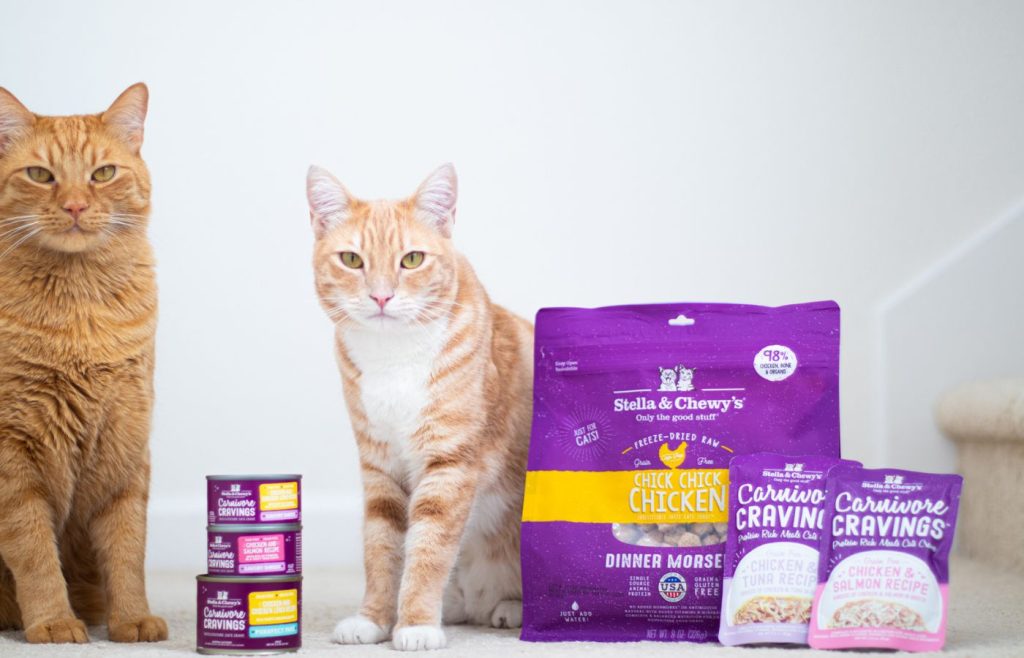
Exercise & Playtime
Whether it’s chasing a toy around the living room, clawing up their scratching post or chasing after “prey” during playtime, cats need exercise to keep their hearts healthy. The first step to achieving a healthy cat weight starts in the kitchen, but it should be reinforced with exercise (when possible) to get the blood pumping! Cat enrichment activities are another great way to help your cat be more active (and prevent unwanted behaviors such as scratching your furniture).
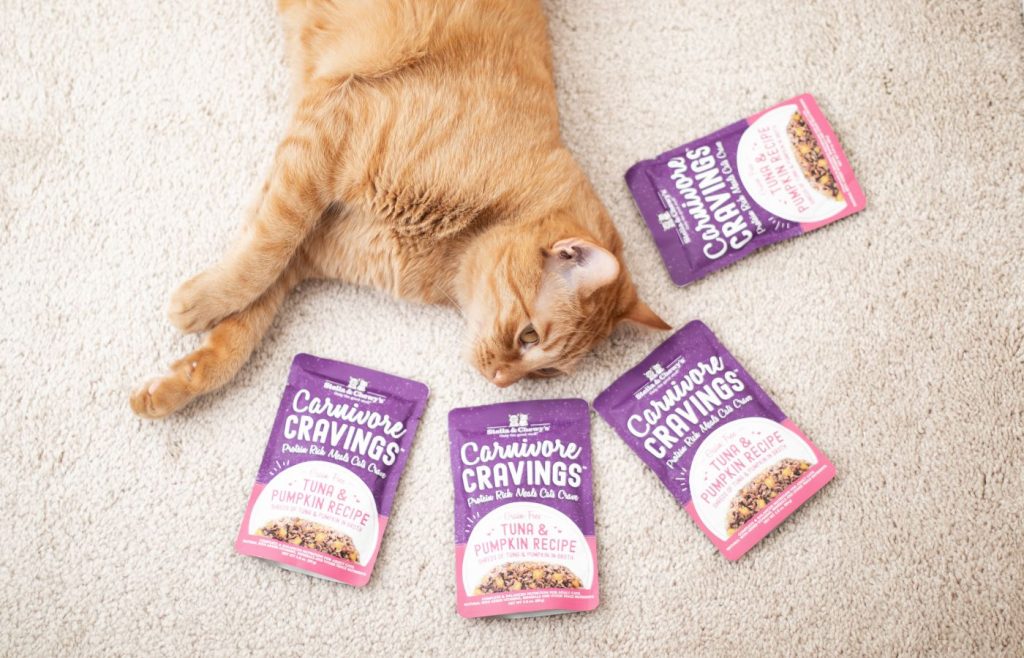
If Needed, Try a Weight Loss Diet
If you’ve tried all that you can, including the helpful tips listed above, then it might be time to call your veterinarian for recommendations on a cat diet plan. Similar to humans, feline diets are usually temporary tactics to get them back on track. Once their healthy cat weight is achieved and they can transition back to their normal diet, cat parents should do everything they can to keep up healthy feeding and exercise habits to manage their cat’s weight.
How to Help a Cat Gain Weight
Just like with weight loss, helping an underweight cat gain weight is best done with guidance from your veterinarian. Depending on your cat’s overall health, age and other factors, your vet may recommend different weight gain strategies. In general, ways to help a cat gain weight include changing the type of food, adding extra calories to their diet and reducing stress at mealtime.
High-calorie cat food: Kitten food, as well as cat food specifically formulated for weight gain, are more calorie dense to give your cat more energy in every portion.
More frequent meals: If your cat has a small appetite or doesn’t eat enough food in one sitting, serving smaller meals more frequently might make it easier for them to consume more daily calories.
Try wet food: Wet food has more flavor and aroma than dry food, which could encourage your cat to eat more. If your cat struggles to eat because of dental issues, a wet food diet will be easier for them.
Warm food: Slightly warming cat food can enhance the aroma and appeal. You can place an unopened can or pouch in a bowl of warm water for a few minutes, add a small amount of warm water to dry cat food, or microwave wet cat food for 5-10 seconds. Stir and check the temperature after heating, aiming for lukewarm, not hot. Remember that raw food should not be cooked, heated, or microwaved, but using a warm water bath can gently raise the temperature of the food if needed.
Cat food toppers: Adding a meal topper to your cat’s regular potion will increase calorie intake as well as mealtime excitement. Our delicious freeze-dried raw cat food mixers and toppers can help entice picky cats!
Treats & calorie supplements: Your vet may recommend a nutrition supplement or nutritious treats between meals to help increase your cat’s calorie intake.
Stress-free mealtimes: Make sure your cat has a quiet, comfortable, distraction-free place to eat, and stick to a regular feeding schedule. Make sure your cat’s food dish is away from the litter box, and always provide fresh water. In multi-cat households, look out for food aggression from other cats and feed your underweight cat separately if necessary to make sure they are eating enough.
Healthy Cat Food Options from Stella & Chewy’s
At Stella & Chewy’s, we have a wide range of different cat foods that are both healthy and delicious! If you need help finding the right food or treats for your feline, get in touch with our pack by emailing info@stellaandchewys.com. Keep reading to learn about choosing the right food for your cat, and tips for feeding cats with sensitive stomachs.
GET $3 OFF, INSIDER OFFERS, AND HELPFUL PET CARE TIPS.
By entering your information, you are opting in to receive communication from Stella & Chewy's


